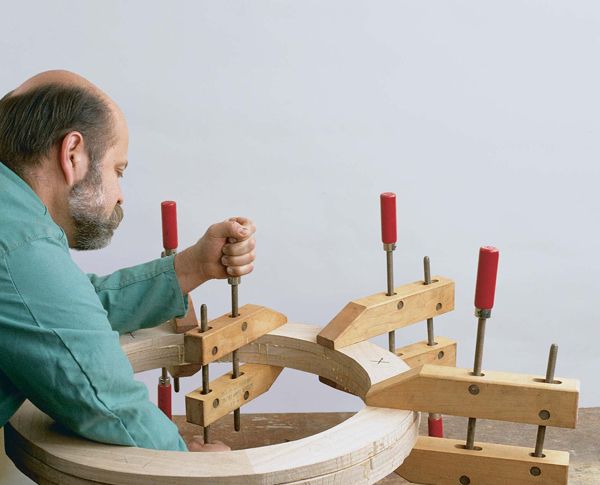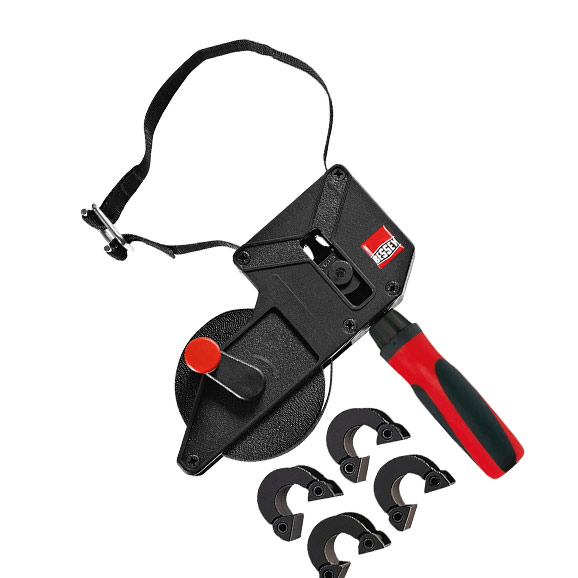Forming Curves from Layers of Blocks
Technique offers strength, stability
Synopsis: Kirt Kirkpatrick glues together segments of wood like a mortared wall for strong, stable curves. The method is called bricklaying, and it can be a full circle, an arc or any curve. For strength, you need at least two layers of glued-up segments, but three or more is best. He talks about why patternmakers use brick-laid segments and how they’re ideal for bowls and furniture. Kirkpatrick starts by making a segment template, and then lays out and cuts the segments from the stock. You glue up the segments, then the layers, and then mark and trim the form to final size. Lots of side information covers making a circular frame, bricklaying a six-segment ring, and a look at professional patternmakers at work.
Building furniture is a pretty linear process, as long as the parts are straight, the joinery is simple and the framework is rectangular. But many pieces aren’t straight at all (see the inset photo above). Tables can have curved aprons and edges. Mirror frames are often oval or circular in shape. Drawer fronts can be serpentine. So what do you do when a piece of furniture throws you a curve?
I’ve found that segments of wood, glued together like a mortared wall, are just what the doctor ordered to make strong, stable curves. I first used this construction method, known as bricklaying, in 1975 while serving my patternmaker apprenticeship. I rarely make wooden patterns anymore, but I continue to use the bricklaying technique for curved furniture components. The bricklaid form can be a full circle, an arc or any curve. For strength, a curve needs at least two layers of glued-up segments, but three or more is best. A single layer isn’t strong enough unless you use some additional joinery, like splines, biscuits or dowels to bridge the butt joints between individual segments.
Just as with ordinary laminations, I always make the bricklaid form oversize. That way, I can adjust the layout of the finished part onto the glued-up stock. Once the glue sets, I can cut joinery into the form and shape and sand it just like it is a solid piece of wood. In the case of a circular mirror frame (like the one that’s described in the story on p. 88), the form is ring-shaped. Bricklaid curves can be more complex, but because the mirror frame is simple, it’s a good example of how the technique works. First, though, it’s helpful to see why bricklaid segments are so versatile and to understand the importance of making accurate templates.
Why patternmakers use bricklaid segments
Patternmakers glue wooden blocks together like layers of bricks to build the curved areas of wooden patterns, which are fullsized models used to form molds in sand. The sand molds are then used to cast metal.
From Fine Woodworking #111
For the full article, download the PDF below:
Fine Woodworking Recommended Products

Ridgid EB4424 Oscillating Spindle/Belt Sander

Jorgensen 6 inch Bar Clamp Set, 4 Pack

Bessey Band Clamp





















Log in or create an account to post a comment.
Sign up Log in